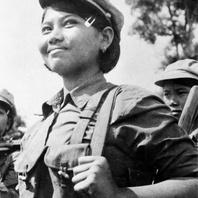
Item
Female soldier of the Kampuchea United Front for National Salvation
This unattributed photograph shows an unidentified young Cambodian female soldier of the Kampuchea United Front for National Salvation (KUFNS, also known as FUNSK) [Front or Renakse]. She is smiling and holds firmly the straps of her rucksack. This photograph is part of the collection held by the Agence Khmère de Presse (AKP) and Cambodia’s Ministry of Information. This collection, which documents the early years of the People’s Republic of Kampuchea as photographed by the Vietnamese and a small team of Cambodian photographers, has not yet been classified or indexed.
Read More
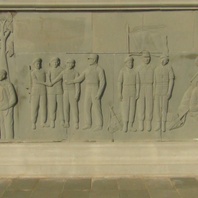
Item
Win-Win Monument bas-relief
This photograph provides a view of bas-relief on the 117-metre-long engraved base of the Win-Win Monument. It depicts negotiations between Cambodia’s military and last Khmer Rouge factions leading to the defection of the latter. The Win-Win Monument complex – photographed here in January 2020 – was inaugurated in December 2018 to mark the twentieth anniversary of the end of the post-Democratic Kampuchea civil war, with the final defection of the remaining Khmer Rouge factions, thanks to the DIFID policy (“Divide, Isolate, Finish, Integrate, Develop”) also known as the “Win Win” policy of Prime Minister Hun Sen.
Read More
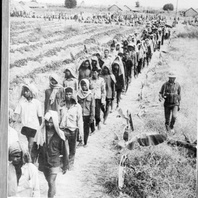
Featured Item
Khmer Rouge prisoners escorted by Vietnamese troops
This picture shows Khmer Rouge prisoners being escorted by Vietnamese soldiers during the start of the Vietnamese intervention in Cambodia. This photograph is part of the collection held by the Agence Khmère de Presse (AKP) and Cambodia’s Ministry of Information. This collection, which documents the early years of the People’s Republic of Kampuchea as photographed by the Vietnamese and a small team of Cambodian photographers, has not yet been classified or indexed.
Read More
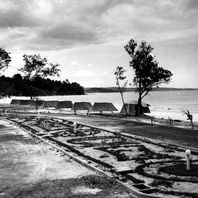
Featured Item
Beach promenade, Sihanoukville
The photograph is part of the collection that was donated to the National Archives of Cambodia from the Library of the Royal University of Fine Arts by Darryl Collins and Helen Grant Ross in 2003. The collection was used by Collins and Ross for their research into urbanisation. The images were probably originally used to mount the Sangkum Reastr Niyum Permanent Exhibition at the Exhibition Hall, Bassac area, Phnom Penh.
Read More
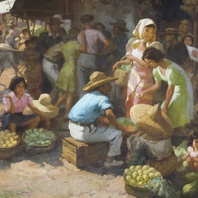
Person
Kim Weir
Read More

Item
Win-Win Monument
The Win-Win Monument obelisk (33 metres in height) – photographed here in January 2020 – is part of the monumental complex inaugurated in December 2018 to mark the twentieth anniversary of the end of the post-Democratic Kampuchea civil war, with the final defection of the remaining Khmer Rouge factions, thanks to the DIFID policy (“Divide, Isolate, Finish, Integrate, Develop”) also known as the “Win Win” policy of Prime Minister Hun Sen.
Read More
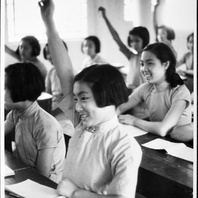
Item
Japanese language is exclusively used in the classroom
From a collection of staged photographs produced under the title “Life at a Girls School in Peking”, and produced at the Peking Jiyu Gakuen in Japanese-occupied Beijing. The original caption reads: “Japanese language is exclusively used in the classroom”.
Read More
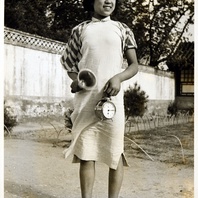
Item
“Great housewife” with the school bell [sic]
From a collection of staged photographs produced under the title “Life at a Girls School in Peking”, and produced at the Peking Jiyu Gakuen in Japanese-occupied Beijing. The original caption reads: “The girls have to bring the bell in turn every day with the title of ‘great housewife’. Chinese girls have no conception of TIME but they know morning, noon and evening. Teaching the idea of time is the first fundamental step towards a better education [sic]”.
Read More
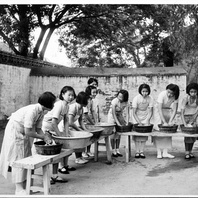
Item
Washing hour
From a collection of staged photographs produced under the title “Life at a Girls School in Peking”, and produced at the Peking Jiyu Gakuen in Japanese-occupied Beijing. The original caption reads: “Evidently the girls are enjoying a ‘new domestic arts’ [sic]”.
Read More
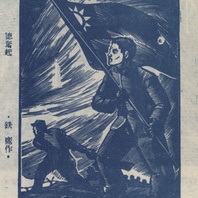
Item
Zong fenqi (Uprising)
This woodcut, by an artist called Tie Ying (lit. “iron eagle”), was reproduced in Zhonghua huabao (Chinese Pictorial) 2.2 (March 1944). The importance of the muke (woodcut) form to artistic practice in occupied China has been almost entirely overlooked in the literature. The muke form has hitherto been associated with the art of resistance in China, despite being an important part of “occupation” visual cultures as well. In this case, the image of Chinese men, dressed in their “New Citizens Uniforms” (Xin guomin zhifu) and waving the ROC flag as they run into battle against enemies unseen, looks almost identical to early wartime resistance muke.
Read More
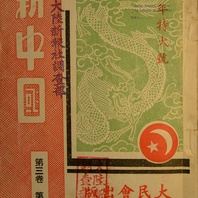
Item
Xin Zhongguo (New China) cover, January 1940
This is the cover image of the magazine Xin Zhongguo (New China) 3.1 (January 1940), published by the Daminhui (Great People’s Association) in Nanjing. The Daminhui was a propaganda and mobilization organization established by the Japanese in 1938, which was later folded into Wang Jingwei’s Kuomintang (Nationalist Party). The Daminhui specialised in public expressions of support for the occupation, and employed a staff of Chinese organisers, artists, and writers. The sun-and-moon logo of the Daminhui can be seen on this magazine’s cover. The untitled woodcut image of the dragon is unattributed. It is included here to coincide with the New Year (which this issue of Xin Zhongguo celebrates). Significantly, text on the magazine’s cover suggests that this copy of New China was once owned by investigations department of the Japanese-language, China-based newspaper, the Tairiku Shinpō.
Read More
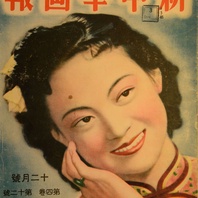
Item
Xin Zhonghua huabao (New China Pictorial) cover, December 1942
This cover from the Xin Zhonghua huabao (New China Pictorial) 4.12 (December 1942) features an image of Li Lihua. Li was one of the most popular film celebrities in wartime Shanghai, and was favoured by the occupation regime in pro-government media. The New China Pictorial was a bilingual (Chinese-English) magazine published from 1939 through 1944 in Shanghai by the occupation journalist Wu Linzhi for distribution in China and throughout Southeast Asia.